New: The Nikon D810 has been a firm favorite among both enthusiast and professional photographers since its launch, but has now been replaced by the brilliant D850. The D810 is still a very well-rounded full-frame DSLR and will now be better value than ever, but if you want the best, go for the D850 – you won't regret it.
Nikon's D800 and D800E caused great excitement when they were first announced in February 2012 largely because of their groundbreaking 36 million pixel count. These two full-frame DSLR cameras are identical apart from the fact that the D800E's sensor has a weaker anti-aliasing (AA) or optical low-pass filter (OLPF) to enable it to deliver sharper details straight from the camera.
Thanks to their impressive detail resolution the two cameras quickly went to the top of the wish list for many professional and enthusiast photographers, especially those looking for a comparatively lightweight camera for landscape, still life or macro photography. They have remained firm favourites ever since, setting the bar for resolution by which other cameras are judged.
Now the replacement for these two cameras has been announced in the form of the 36.3MP Nikon D810, one camera without an anti-aliasing filter to replace both models. Interestingly, we have been told that while the D800E was widely reported as having no AA filter, the filter over the sensor did actually have some anti-aliasing effect, and this has now been completely removed from the D810's filter.
This should enable the new camera to record even more detail than before, and Nikon is claiming that the Nikon D810 produces 'the highest image quality in Nikon's history'. Omitting the AA filter brings increased risk of moire patterning in images, but it hasn't been found to be a major issue for D800E users.
Features
- Full-frame CMOS sensor, 36.3MP
- 3.2-inch screen, 1,229,000 dots
- 1080p video capture
Given the high pixel count of the Nikon D800 it’s no surprise that the Nikon D810 has the same number, but we are told that it uses a newly designed sensor, which usually means improved noise control. It has also been coupled with Nikon’s EXPEED 4 processing engine instead of the EXPEED 3 engine of the D800 and this too should be good news for image quality.
Other changes from the D800 include a higher resolution LCD screen, the ability to record smaller raw images as seen with the Nikon D4S and the introduction of Group-area AF mode, also seen in the D4S. The move to the EXPEED 4 processing engine also enables an increase in the maximum continuous shooting rate at full resolution to 5fps, this was previously 4fps. Alternatively, the D810 can shoot at 7fps in DX format and record 15.3Mp images.
The D810’s buffer capacity has also improved and it can shoot more raw files than the D800 in a single burst. For example it can shoot 47 lossless compressed 12-bit raw files rather than 21, and 23 uncompressed 14-bit raw files instead of 16. This is a significant step forward in making the D810 more of an all-rounder, but you have to be prepared for the memory cards to fill up quickly.
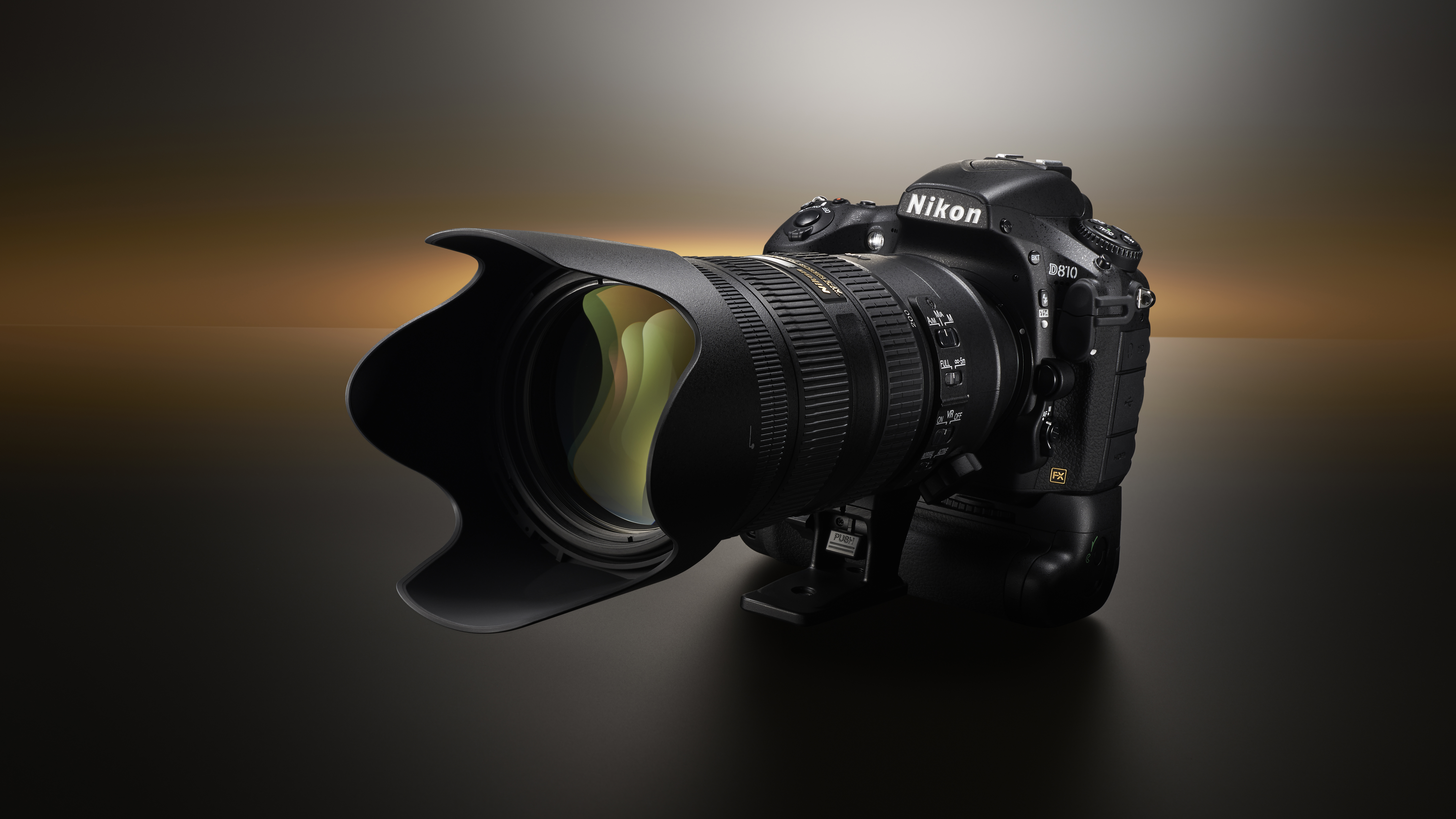
The maximum number of JPEG images that can be recorded in a single burst remains the same, at 100 whatever the file size or quality. That’s unless exposures longer than four seconds are used, when the burst depth is only limited by card capacity.
Sensitivity may be set in the native range ISO 64-12,800 and there expansion settings stretching from ISO 32 to ISO 51,200, giving greater scope for shooting at wide apertures or in bright conditions as well as better low-light capability.
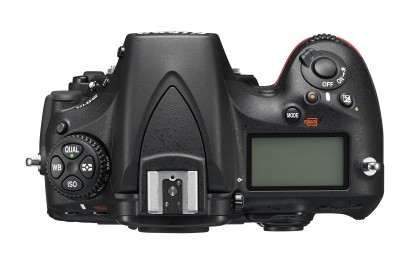
In addition, the D810’s video capability improves on the D800’s with the ability to shoot at 50 and 60p and a Zebra display mode that shows areas close to burning out. There’s also a new Flat Picture Control mode that has reduced sharpening and contrast to maximise dynamic range for better post-capture grading. This new Picture Control mode is also available when shooting stills.
In another change to the Picture Control options it’s now possible to adjust image clarity or micro contrast to give an impression of greater (or reduced) sharpness without over-emphasising strong edges.
Video (and stills) may be shot in FX or DX format and there’s a clean HDMI out, plus the ability to capture full-resolution footage in-camera and on an external recorder simultaneously. When shooting video in manual mode, sensitivity can be set from ISO 64 to ISO 51200 while the Auto ISO function allows you to specify the maximum sensitivity setting to be used. This is especially useful when combined with the ability to use power aperture and set the two buttons next to the lens mount on the front of the camera (marked Fn and Pv) to open up or close down aperture. It should also ensure steadier footage with less operation noise.
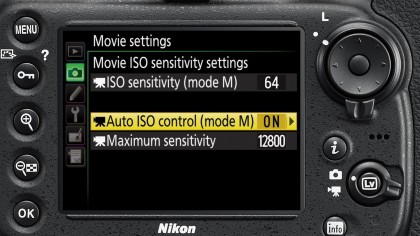
Further video-centric improvements include greater control over audio recording to allow the user to select the sound range (wide/voice) and for wind noise to be reduced when recording with the built-in microphone. Audio levels can be fine-tuned in isolation before and during recording.
Like the D4S, the D810 has Nikon’s 51-point Multi-CAM 3500FX AF system which adds Group-area AF mode to the usual options (9-,21- and 51-point dynamic-area AF and 3D-tracking). Group-area AF mode is designed to help when shooting subjects that are comparatively small and close to a high-contrast or distracting background. When it’s activated the user selects an AF point and the camera uses it and the ones immediately above, below, left and right to keep the subject sharp.
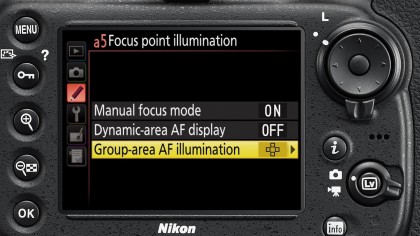
Nikon has given the D810 a new shutter/mirror box mechanism that is claimed to reduce vibration giving a steadier viewfinder image with less blackout for better autofocusing and sharper images. Internal vibrations can be further reduced by a new electronic front-curtain shutter that can be used in Mirror lock-up or Exposure delay mode. Both of these points should enable users to get greater benefit from the camera’s potential resolving power.
Like the Nikon D4S, the Nikon D810 can record smaller sized uncompressed 12-bit raw files. This is of particular interest to animators and those producing timelapse sequences who want the quality and control of raw files without the huge file sizes of a 36MP image.
While the size of the D810’s screen remains the same as the D800’s at 3.2-inches, its resolution has been boosted to 1,229,000-dots (the D800 has 921,000 dots) and the colour balance and brightness can be tuned to the photographer’s preference or the shooting conditions.
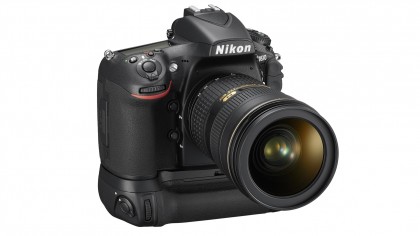
In a first for a Nikon SLR, there’s a new Live View split-screen zoom mode that allows photographers to check sharpness in two areas at the same time. This is especially useful when shooting landscape and macro scenes when depth of field is very important. Helpfully, you can see the impact of changing aperture as it is adjusted.
It’s a shame that Nikon hasn’t included Wi-Fi connectivity in the D810, instead users wishing to transfer images wirelessly have to use the optional UT-1 Data Transmitter together with the WT-5 Wireless Transmitter.
So just how different is the D810 to the D800 and D800E that went before it? On paper, they do look rather similar, but the differences lie in a myriad of details. Here are ten key changes that may not seem much on their own but really do add up.
01 D810 Sensor
The D810 has a 36-megapixel full-frame sensor, just like the D800/D800E before it, but Nikon says the sensor is ‘newly designed’. One key element is the removal of the anti-aliasing function from the low-pass filter in front of the sensor – it turns out the old D800E simply had a weakened anti-aliasing effect, and it wasn’t removed entirely.
02 Expeed 4 processor
This is the name of Nikon’s in-camera image processing hardware. The D810 uses a newer and more powerful Expeed 4 version the Expeed 3 processor in the D800/D810, and this allows two key improvements: faster continuous shooting and a higher ISO range.
03 D810 continuous shooting
The D800/D800E could shoot at 4 frames per second, which wasn’t bad for a high-resolution camera designed mainly for static subjects – but it did restrict its versatility just a little. The D810 can shoot slightly faster at 5 frames per second, so it’s still no action camera but, as any pro will attest, any small gain is a gain worth having – taken in conjunction with the higher ISO range, the D810 is more versatile than its predecessor.
04 New D810 shutter mechanism
This contributes to the higher frame rate. The new shutter/mirror box assembly reduces viewfinder blackout while the electronic ‘front’ shutter helps reduce vibrations in mirror-up mode – which is ideal for still life, macro or product shots, for example.
05 D810 ISO range
The D800/D800E had a maximum (non-expanded) ISO of 6400, but the D810 goes one stop further to ISO 12800. This can be attributed, we presume, to the ‘newly designed’ sensor and the improved Expeed 4 image processing. It also goes a little lower, to ISO 64. This will please photographers looking for the best quality possible, and the slowest possible shutter speeds for blurred skies and water in landscape shots, and wider lens apertures/better background blur in portrait shots, for example.
06 D810 Battery life
Nikon has evolved the EN-EL15 battery in the D800/D810 into an EN-EL15a version. So what? Well, it gives the D810 a 33% boost in battery life, that’s what – that means up to 1200 shots on a single charge. It’s not headline tech, but for a pro user that’s a significant gain.
07 Nikon Raw S format
At first sight, Nikon’s small raw file format looks a bit odd – who wants to shoot high-quality quarter-size raw files? Stills photographers, probably not, but stop-frame animators who want the quality of raw files will be very happy.
08 D810 video features
The D810 can record video at 60/50p, offers a zebra display mode for highlight burnout warnings and better audio control. There’s also a new ‘Flat’ Picture Control with reduced sharpening and contrast to give a better starting point for post-capture grading.
09 Nikon Picture Control 2.0
Nikon’s Picture Controls won’t be of any great interest to those who shoot only raw since they only apply to in-camera JPEGs. Even so, the new Clarity option in the Picture Controls is worth a look because it adds a localised contrast boost that can make images really jump out – especially in black and white.
10 D810 design changes
The screen size stays the same at 3.2 inches, but the resolution goes up from 921k dots to 1229k dots. This can now show a split-screen zoom view for checking sharpness in different parts of the picture at the same time. Elsewhere, a few tweaks to the body and controls are intended to improve the ergonomics without upsetting existing D800/D800E users.
Any Nikon D800 user who picks up a Nikon D810 is going to find themselves right at home because there are only a few fairly subtle design changes introduced with the new model. The grip on the back of the camera, for example, is a little more pronounced, the front grip is slightly more ergonomically shaped and the memory card door feels more durable.
The changes to the grips makes the new camera feel more comfortable and secure in your hand than the D800 it replaces, but there’s not much in it.
The metering switch on the back of the D800 has also gone to make the AE-Lock/AF-Lock and AF-on buttons easier to reach and operate with the camera held to the eye. The metering options are now accessed via what was the bracketing button above the drive mode dial on the top of the camera. I generally prefer a switch or dial for making selections if possible because it’s usually quicker and easier, but don’t think the change to a button for metering is a deal-breaker.
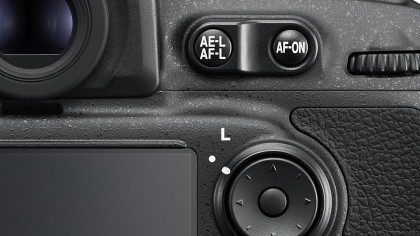
The most noticeable difference, however, is the introduction of an ‘i’ button on the back of the camera. This gives access to some key settings such as Active D-Lighting and Bracketing and it works in the same way as it does on other recent Nikon SLRs. It is particularly useful when shooting in Live View or Video mode and it provides the means of accessing the Split-screen view.
However, as we have said before, it seems strange having options to change some of the customisation settings via this information screen in reflex shooting mode. I think it would be better for the options to change the functions of the Preview and Fn buttons, for example, to be in the main menu. This would free up space in the information screen for other features such as Exposure Delay that may need to be accessed on a shot-by-shot basis.
I’d also like to be able to make adjustments via the Information display that pops up when the Info button is pressed. As it stands this displays all the key camera settings, but they can’t be selected or adjusted. It feels like a waste and a bit of an overlap in buttons.
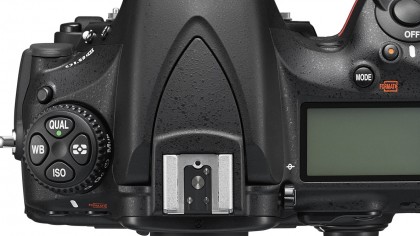
As on the Nikon D800 and the brand’s enthusiast and professional-level cameras such as the Nikon D7100 and Nikon D4S, there’s a focus mode control switch and button next to the lens mount within easy reach of your left hand when using the camera. The switch is used to set automatic or manual focusing while the button is used in conjunction with the camera’s two control dials. Rotating the rear dial enables switching between Single AF (AF-S) and Continuous AF (AF-C), while the front dial can be used to toggle between the AF point selection options (including the new Group-area AF mode) available in each mode.
When using the Nikon D810 for the first time in earnest I had to double-check that it wasn’t set to Quiet or Quiet Continuous mode because the mirror and shutter movements are much quieter and feel more dampened than those of the Nikon D800. It makes the camera much more discrete and somehow conveys a sense of higher quality.
Operation in the Quiet modes is only slightly quieter than in the normal shooting modes. In standard Quiet mode it separates the sounds of the mirror lifting and the exposure being taken from that of the mirror flipping back down into place. It’s quite a bit quieter than the D800 in Quiet mode, but not dramatically different from its own operation in standard mode.
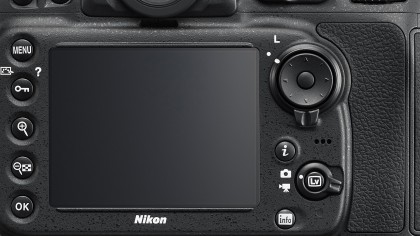
Another operational difference becomes apparent when shooting in Live View mode, as the Nikon D810 displays the images much more quickly than the D800 after a shot has been taken. The contrast detection autofocus system, however, operates at a similar speed. It’s not a patch on that of a compact system camera, but it’s usable provided the camera is held on a tripod.
As with other Nikon SLRs, the Picture Control options can be accessed via the menu or by pressing the shortcut button which doubles as the image-lock button in review mode. The new Clarity option can be adjusted across 11 levels (+/-5). If you shoot raw images, however, you can adjust this over a much wider scale in Adobe Camera Raw, which now has been updated to make it compatible with Nikon D810 raw files.
Although they have a little more detail if you really look for it, images direct from the Nikon D810 don’t look dramatically different from those from the Nikon D800. As a rule they have pleasant, vibrant colours and exposure is good in most conditions when the Matrix metering system is used.
Noise is generally controlled well and shots taken at the higher sensitivity settings look very good at normal viewing and printing sizes. Examining these images at 100% on screen reveals that noise has a finer texture from the D810 than the D800; there’s less smoothing or clumping. This seems to make the noise more visible to our lab testing system, but it helps with the impression of detail.
As you would expect with a camera that has 36 million pixels, images have lots of detail visible. However, getting every last scrap of detail demands that the camera is used on a tripod, the optimum aperture is set and exposure delay is employed along with the front shutter, plus the subject is motionless. When you zoom into handheld images there often seems to be something that means the image isn’t absolutely sharp. That’s just a downside of having such small photosites – tiny, tiny movements have a significant impact.
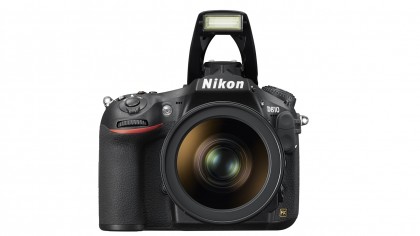
At ISO 100, 1/250sec and f/8, however, you can expect yourself to be scrutinising the weave of the shirt in a head and shoulders portrait and nodding contentedly that the pixel count is worthwhile. Plus a shot taken in low light at ISO 3200 can withstand being viewed at A2 size. Even JPEGs taken at ISO 6400 contain very fine details and chroma noise is restrained well, with just a hint of coloured speckling in darker, non-black areas.
Our lab testing indicates that using the front shutter instead of the standard unit makes a slight, but immeasurable, difference to detail resolution. It’s possible that the degree of impact varies depending upon which tripod you use and how carefully you tighten up the controls. Using the exposure delay mode that fires the shutter a little after the mirror has lifted, however, has a dramatic impact. You won’t necessarily see obvious movement, but the image lacks the detail resolution that you get when it is employed.
Given its pixel count and the huge files it produces, it’s unlikely that the Nikon D810 would be the choice of many professional sports photographers. However, its autofocus (AF) system is more than capable of getting moving subjects sharp and tracking them across the frame.
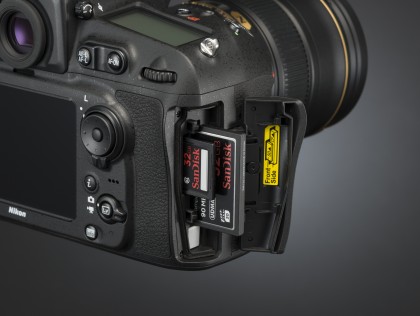
It can also operate in very low light levels. All of these factors combine to make the Nikon D810 a good all-round camera that can be used for shooting a variety of subjects in a wide range of conditions.
I found the D810’s automatic white balance system to be very capable, delivering good results in natural lighting conditions like bright sunlight and shade. It also strikes a good balance when the two are mixed. The Auto white balance setting that’s designed for keeping the warmth of warm lighting is useful, but it’s just as easy to switch to the Daylight setting when you’re shooting sunsets and the like.
Happily, I found that the Nikon D810’s screen gives an accurate representation of an image’s colour during my testing. As a rule, colours direct from the D810 are to the vibrant side of 100% natural, which is exactly what most people want.
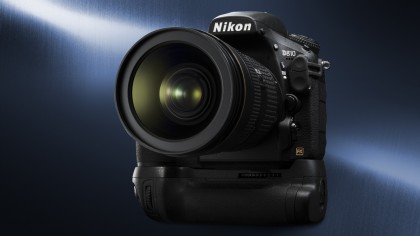
As mentioned earlier, the D810’s Matrix metering system performs well, delivering good exposures in a wide range of conditions. Naturally, it doesn’t get everything right, but it copes with situations that would throw some other cameras and isn’t excessively distracted by very bright or dark areas of the scene.
In addition, real world images have very good dynamic range and pleasing contrast. As usual, many photographers are likely to want to perfect their images on a computer, but the JPEG results straight from the camera are more than acceptable.
As part of our image quality testing for the Nikon D810 we’ve shot our resolution chart.
Click the link to see a full explanation of what our resolution charts mean.
Examining images of the chart taken at each sensitivity setting reveals the following resolution scores in line widths per picture height x100:
JPEG
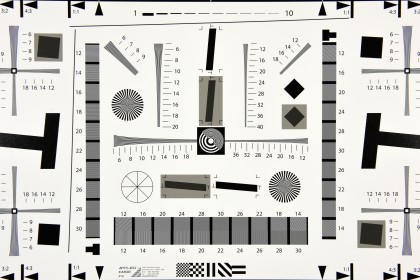
Full ISO 100 image, see 100% crops below.
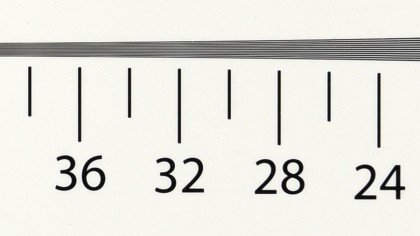
ISO 32, score: 36. Click here for full resolution image.
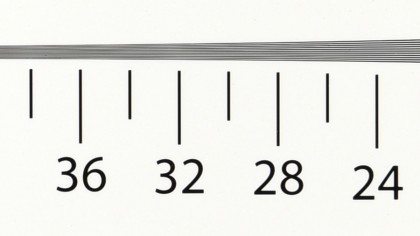
ISO 64, score: 36. Click here for full resolution image.
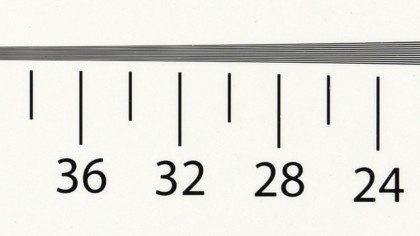
ISO 100, score: 36. Click here for full resolution image.
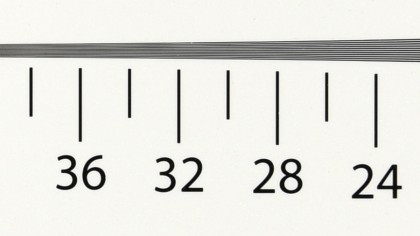
ISO 200, score: 36. Click here for full resolution image.
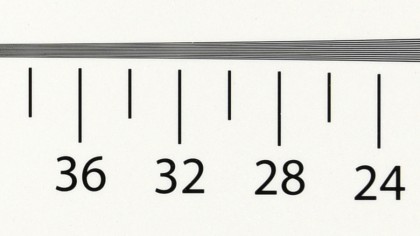
ISO 400, score: 36. Click here for full resolution image.
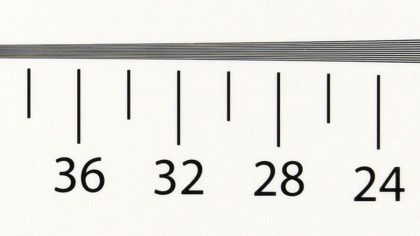
ISO 800, score: 36. Click here for full resolution image.
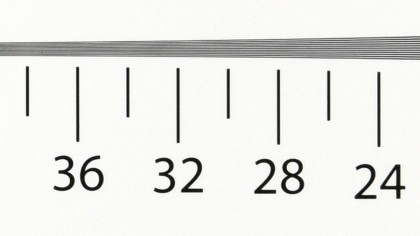
ISO 1600, score: 34. Click here for full resolution image.
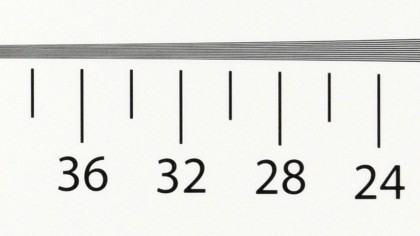
ISO 3200, score: 34. Click here for full resolution image.
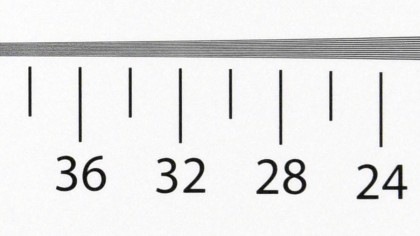
ISO 6400, score: 34. Click here for full resolution image.
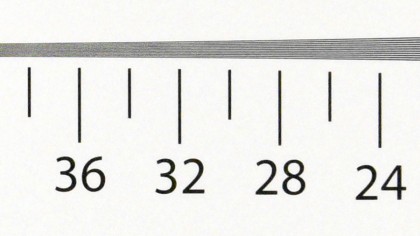
ISO 12800, score: 32. Click here for full resolution image.
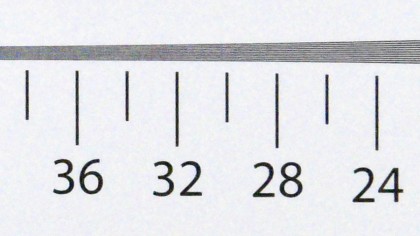
ISO 25600, score: 30. Click here for full resolution image.
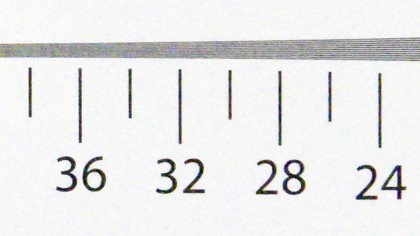
ISO 51200, score: 28. Click here for full resolution image.
Raw
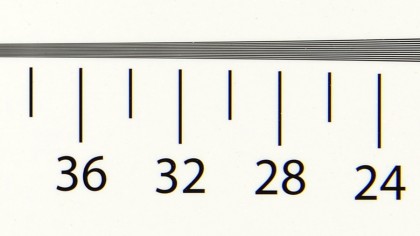
ISO 32, score: 38. Click here for full resolution image.
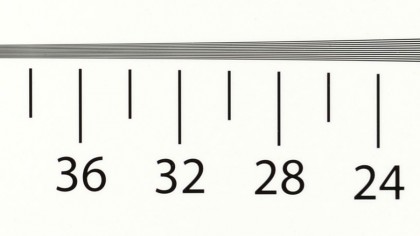
ISO 64, score: 38. Click here for full resolution image.
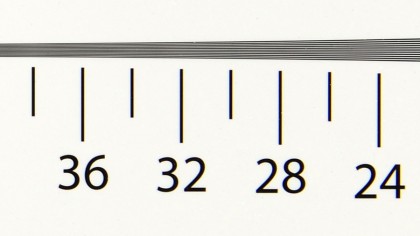
ISO 100, score: 38. Click here for full resolution image.
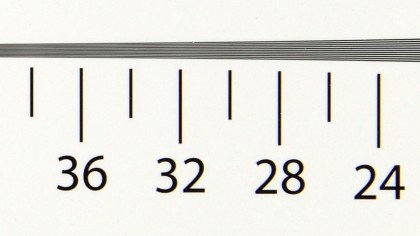
ISO 200, score: 38. Click here for full resolution image.
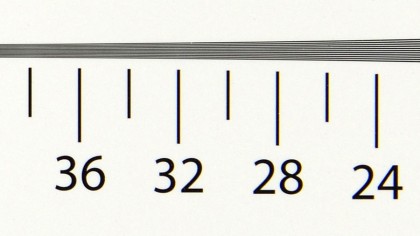
ISO 400, score: 38. Click here for full resolution image.
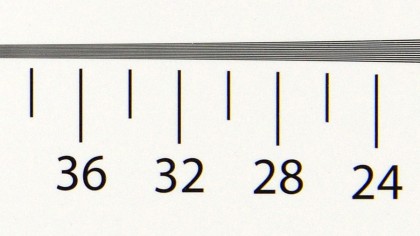
ISO 800, score: 36. Click here for full resolution image.
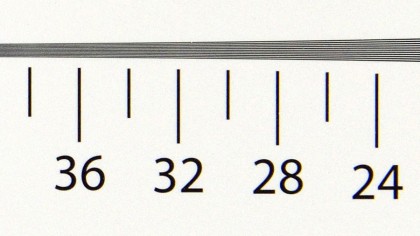
ISO 1600, score: 36. Click here for full resolution image.
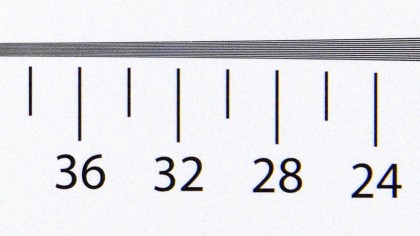
ISO 3200, score: 34. Click here for full resolution image.
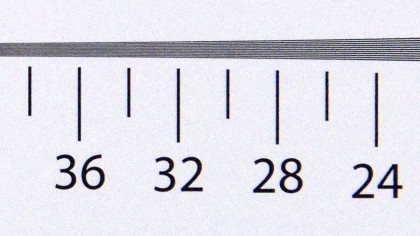
ISO 6400, score: 34. Click here for full resolution image.
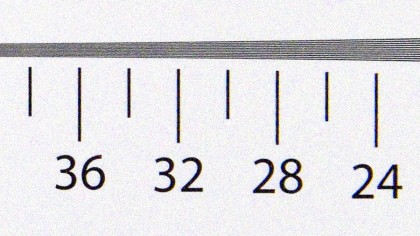
ISO 12800, score: 32. Click here for full resolution image.
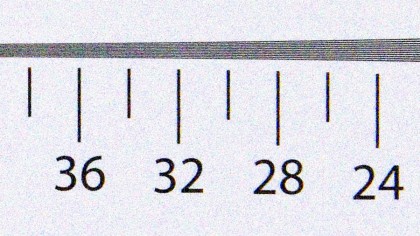
ISO 25600, score: 32. Click here for full resolution image.
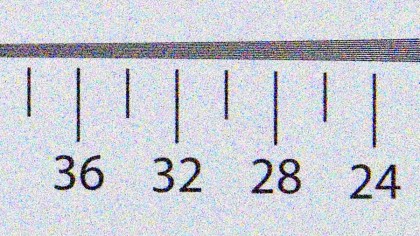
ISO 51200, score: 30. Click here for full resolution image.
We shoot a specially designed chart in carefully controlled conditions and the resulting images are analysed using DXO Analyzer software to generate the data to produce the graphs below.
A high signal to noise ratio (SNR) indicates a cleaner and better quality image.
For more more details on how to interpret our test data, check out our full explanation of our noise and dynamic range tests.
We have compared the Nikon D810 with the Nikon D800, Canon 5D Mark III and Sony Alpha 7R. The D810 has a large sensitivity range, stretching down lower than any other camera here – to ISO 32 – and up as high as ISO 51,200. The Canon beats its top setting, reaching up to ISO 102,400.
JPEG signal to noise ratio
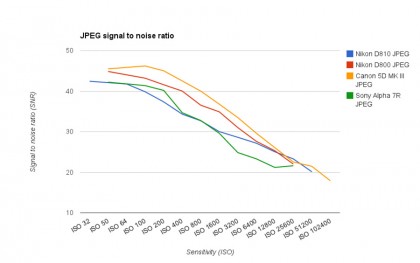
As we can see from this chart, the Nikon D810’s JPEG files have the weakest signal to noise ratio of the three cameras at lower sensitivity settings. But the camera’s JPEGs overtake the Sony Alpha 7R at ISO 1600 and above, beat the Canon 5D Mark III at ISO 25,600 and outdo the older Nikon D800 by producing better ratios at ISO 25,600 and also extending its range further at the lower and upper end of the scale.
The difference that we have detected between the D810’s and D800’s results is likely to be explained by the slight smudging of noise in the D800’s raw files. At 100% on screen the D810’s images have more detail and look crisper to the eye, but the chroma noise is a little more evident.
Raw signal to noise ratio
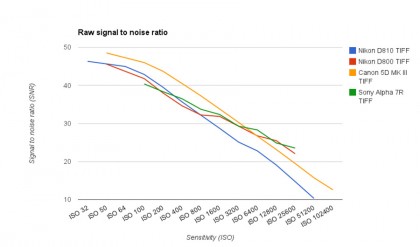
Conversely, the signal to noise ratios of the TIFF images (after conversion from raw) from the Nikon D810 are stronger than TIFFs from the Nikon D800 at lower sensitivities, yet weaker at ISO 800 and above, falling steeply at the upper reaches of its range. The D810’s TIFFs produce weaker ratios than the Canon 5D Mark III‘s at every sensitivity setting, and weaker signal to noise ratios than the Sony Alpha 7R’s at lower ISOs, before surpassing them at ISO 400 and above.
These results differ from those produced by DXO itself, but we convert raw files to TIFF using the manufacturer’s supplied software and with all the noise reduction turned off before they are analysed, whereas DXO analyse raw files directly. Raw files from the D800 also exhibit the slight smudging that we see with the JPEGs in comparison with those from the D810. The D810’s images look more natural at 100% on screen.
JPEG dynamic range
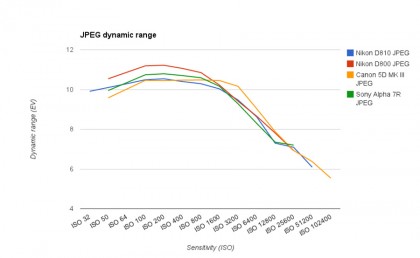
The Nikon D810’s JPEG results for dynamic range are again weaker than the Nikon D800‘s JPEGs at most sensitivities, but they have a similar range to the older camera’s JPEGs at ISO 3200, 6400 and 25,600. The Nikon D810’s JPEGs have a wider dynamic range than the Canon 5D Mark III‘s at ISO 50-200 and ISO 25,600, a similar range at ISO 400 and a smaller range at other sensitivities. Compared with the Sony Alpha 7R’s JPEGs, the D810’s JPEGs show a wider dynamic range at the lowest setting and at ISO 3200 and 6400, but have a smaller range at ISO 100-1600 and a similar range at ISO 12,800 and 25,600.
Raw dynamic range
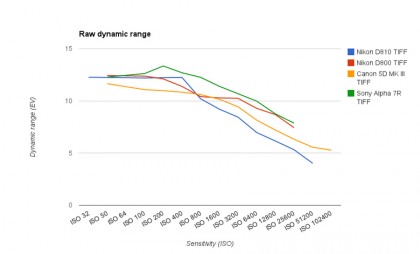
Again the TIFF images (after conversion from raw) from the Nikon D810 are significantly stronger at lower sensitivities than at the higher settings, outperforming the Canon 5D Mark III for dynamic range from ISO 50 to ISO 800, where its results suddenly fall below all of the other cameras here. The Nikon D810’s TIFFs show a less impressive dynamic range than the older Nikon D800‘s at every setting but ISO 400, and fall below the Sony Alpha 7R’s TIFFs throughout the range.
JPEG

Full ISO 100 image. See 100% crops below.
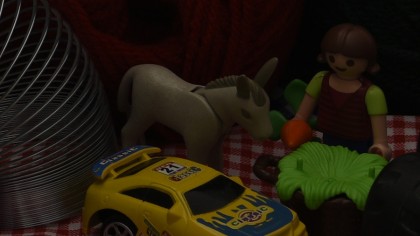
ISO 32, click here for full resolution image

ISO 64, click here for full resolution image
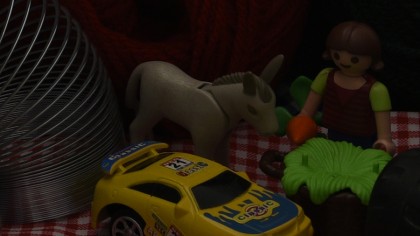
ISO 100, click here for full resolution image
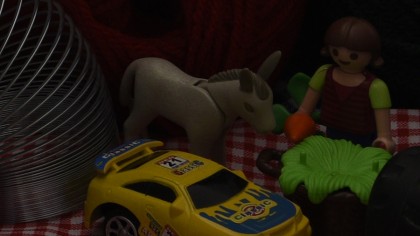
ISO 200, click here for full resolution image
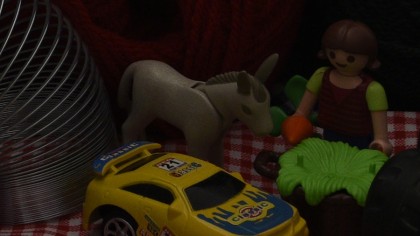
ISO 400, click here for full resolution image

ISO 800, click here for full resolution image
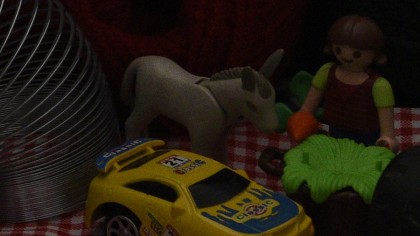
ISO 1600, click here for full resolution image
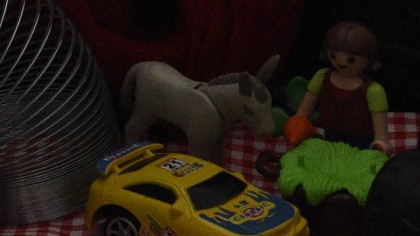
ISO 3200, click here for full resolution image

ISO 6400, click here for full resolution image
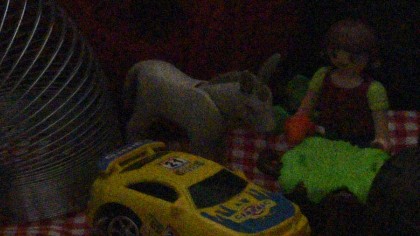
ISO 12800, click here for full resolution image

ISO 25600, click here for full resolution image
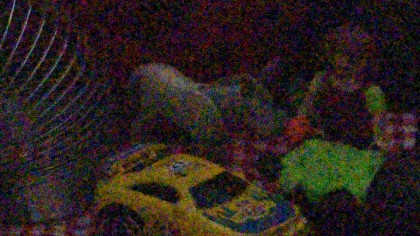
ISO 51200, click here for full resolution image
Raw

ISO 32, click here for full resolution image

ISO 64, click here for full resolution image

ISO 100, click here for full resolution image
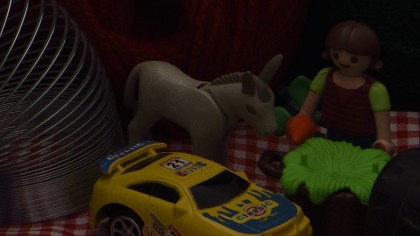
ISO 200, click here for full resolution image
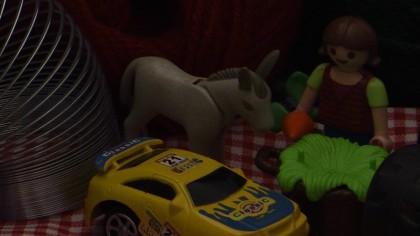
ISO 400, click here for full resolution image
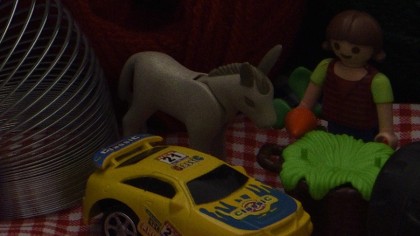
ISO 800, click here for full resolution image
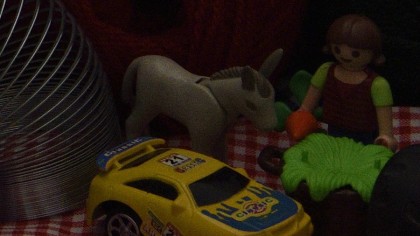
ISO 1600, click here for full resolution image

ISO 3200, click here for full resolution image

ISO 6400, click here for full resolution image
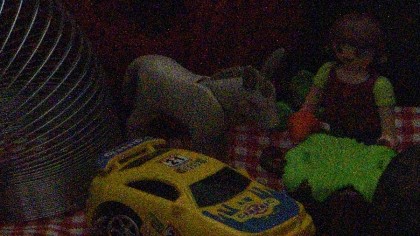
ISO 12800, click here for full resolution image
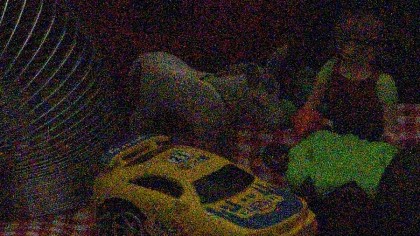
ISO 25600, click here for full resolution image
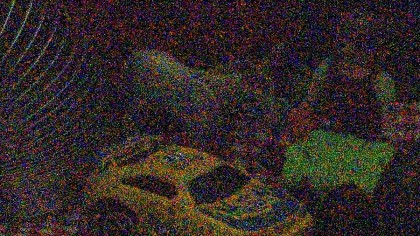
ISO 51200, click here for full resolution image
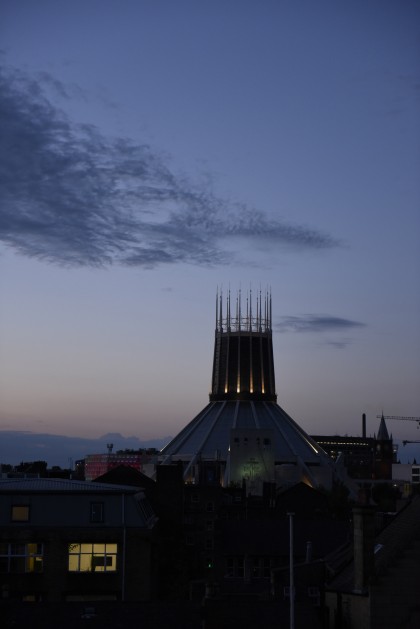
Click here to see full resolution image
A negative exposure compensation of 1.67EV was required in Matrix metering mode to get this ISO 1600 image just as we wanted it; slightly darker than the original scene but with beautiful evening colours.

Click here to see full resolution image
Shot handheld at 1/125 and f/5.6 at 58mm with the 24-70mm f/2.8, this ISO 620 shot has plenty of natural looking detail.

Click here to see full resolution image
Shooting at f/2.8 at 150mm has restricted depth of field nicely, but there’s plenty detail of in this ISO 100 shot.
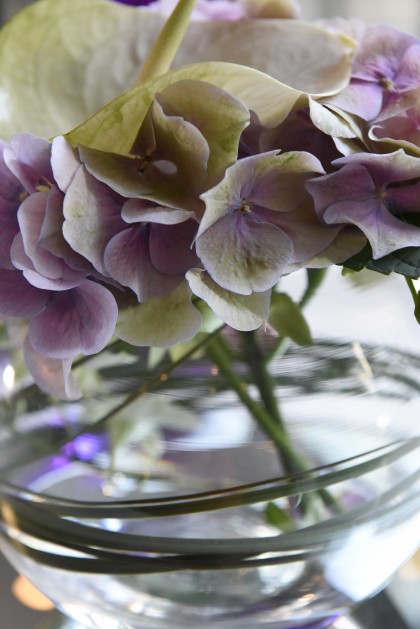
Click here to see full resolution image
The low, soft light gave the AF system a challenge, but it was up to it – and despite using ISO3200, the D810 has produced a beautiful image with subtle chroma noise.

Click here to see full resolution image
Zooming in to 100% reveals logos on caps and hair details in this shot taken using a 70-200mm f/2.8 lens at the 200mm point with a 2x converter to give 400mm.

Click here to see full resolution image
This shot was taken at ISO 6400, but the texture of the suitcases is visible and the tonal gradations look natural. The Matrix metering has produced a nice balanced result.
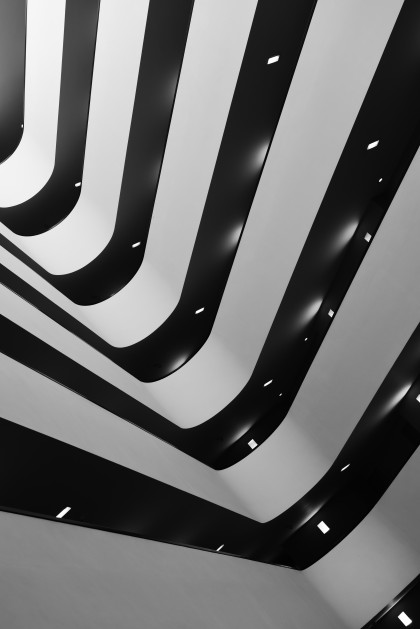
Click here to see full resolution image
We used the D810’s Monochrome Picture Control to bring out the graphic lines of this hotel lobby. As Picture Controls allow raw recording, we have a full-colour image as well.
While the announcement of the Nikon D800 and D800E was widely greeted with excitement and high praise, the Nikon D810’s arrival has been met with some derision.
Although it is disappointing that Nikon hasn’t given the D810 Wi-Fi connectivity to allow the average photographer to control the camera remotely via a smartphone or tablet, or to wirelessly transfer an image or upload it to Facebook, it is still an excellent camera and a worthy successor to the D800. It is unlikely that many existing D800 users will want to upgrade, but the Nikon D810 is still an aspirational camera for many.
Given that the D800 has a 36 million pixel sensor, it seems unreasonable to expect a higher count on the D810’s sensor. Many D800 users already mention (not to say complain) about the size of the files and the need to upgrade their computer and/or storage capacity to deal with them.
The tiny photosites are also highly susceptible to very small movements that mean that the camera needs to be on a decent tripod and used in exposure delay mode to get the benefit from all of them. Without these ‘rules’ being obeyed you may as well have a lower pixel count camera that delivers more manageable file sizes.
What Nikon has changed, however, is just about everything else. Or at least everything that’s important. The sensor and processing engine are new and allow a non-expansion sensitivity setting of ISO 64, which enables you to open up the aperture just a little more in bright conditions, or extend the exposure time that bit further without needing a neutral density (ND) filter.
The AF system is also updated and is both fast and accurate, the main screen has a higher dot-count and performs better in bright light and the maximum continuous full-resolution shooting rate has gone up by 25%. Videographers (and stills photographers) also get the new Flat Picture Control mode that makes footage better for post-capture grading. And there’s a Zebra display to indicate when areas are approaching over-exposure.
Focus peaking and the ability to record 4K footage are notable exclusions from the Nikon D810’s video featureset that would’ve made the camera seem a little more forward-looking.
We liked
It’s surprising how much difference the change to the shutter and mirror box makes – the camera feels more polished and is much more discrete. Its weather-proofing also means that it can be used in harsh conditions.
The autofocus system is also excellent, capable of focusing quickly and accurately and keeping track of a moving subject even in low light.
As with the Nikon D800, Nikon D800E and Sony A7R, having 36 million pixels is really useful when you can’t get the composition exactly as you need it in-camera. There is so much scope to crop. The images are also of excellent quality, with well-controlled noise, pleasant colours and superb detail.
I also appreciate the move towards finer grained noise with less smoothing or clumping at high sensitivity settings. It may make the noise more visible to our lab testing, but the images look more natural and detailed at 100% on-screen.
We disliked
According to Nikon, only a very small percentage of photographers who have a camera with Wi-Fi connectivity built-in actually use it for sharing images on Facebook and the like. However, as one who does so on a regular basis, it’s something I really enjoy doing because I know I’ll have a much better shot than I’ll ever get on my phone. Given the file sizes from the Nikon D810, it’s not something that people are going to do a lot, but it’s nice to have the option – and of course they can also be scaled for faster transfer.
Many users would also appreciate the ability to control the camera remotely via a smartphone, it’s a great way of reducing camera shake.
Although the D810’s control layout is very good and it handles well, I think Nikon could make better use of its ‘i’ button and Information screen. I can’t see the point in having quick access to customisation features that you are only likely to use once. It also seems a shame to have a screen that shows you the majority of the camera’s settings but doesn’t let you change them.
Final verdict
The Nikon D810 is an excellent, well-rounded camera that’s capable of delivering superb images in a wide range of conditions. Its high pixel count and tremendous detail resolution mean that it is especially well suited for use by landscape, still life and macro photographers, but its autofocus system and noise control mean that it is also capable of delivering superb sport, action and wildlife photographs.